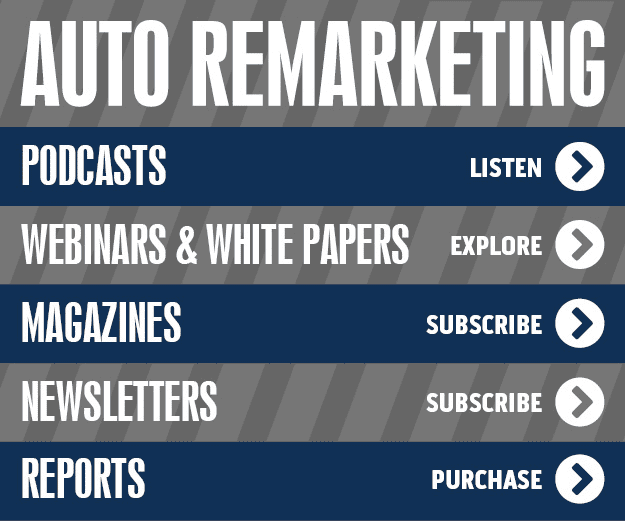COMMENTARY: 4 questions to ask when comparing load management platforms

By subscribing, you agree to receive communications from Auto Remarketing and our partners in accordance with our Privacy Policy. We may share your information with select partners and sponsors who may contact you about their products and services. You may unsubscribe at any time.
Between rising customer expectations, tighter margins, and increased exposure to digital risk, today’s logistics leaders face growing pressure to deliver faster, smarter, and safer outcomes. The challenge isn’t just about keeping up; it’s staying ahead in a complex supply chain environment.
While carriers and shippers are inundated with different software solutions, many of these platforms cause more problems than they solve. Choosing the right load management and dispatch platform is crucial, but it’s not easy.
To help you navigate the market, here are four essential questions to ask:
Is fraud protection proactive or reactive?
Fraud has become a fact of life in logistics, with fake carriers, phishing scams, and hacked systems becoming more frequent and sophisticated. You want to be sure your provider is protecting your business and your reputation as fraud protection has become more sophisticated.
Start by understanding if the software is proprietary or not. Proprietary software is closed-source, which means it’s more secure and less likely to be accessed by bad actors.
If it is proprietary, dig deeper to understand the proactive efforts the company has put in place to protect your business. Many companies will claim they have fraud protection when, in reality, they have minor speed bumps that set hackers back mere seconds. Leaders in the space are moving from defense to offense, using real-time behavioral data to spot unusual activity, continuously verify carrier information, and build systems that flag bad actors before they ever touch a load. The goal is to keep problems out of the pipeline so they never become a crisis.
Subscribe to Auto Remarketing to stay informed and stay ahead.
By subscribing, you agree to receive communications from Auto Remarketing and our partners in accordance with our Privacy Policy. We may share your information with select partners and sponsors who may contact you about their products and services. You may unsubscribe at any time.
Is the pricing transparent?
Pricing is a crucial conversation you can’t afford to skip. When evaluating a solution, you need to know how pricing is calculated. Software should make you more profitable by introducing efficiencies, not bleed your margins dry.
For shippers, look at pricing for the number of vehicles you anticipate moving. Many TMS platforms use tiered pricing, and you want to confirm that there is one for your exact needs and not be forced into a tier (and extra fees) that is designed for shippers twice or three times your size.
For carriers, find out if the platform is priced based on the number of loads per month or the number of drivers you employ. If it’s per load, you want to know what the cost is if you exceed the limit. You need transparency of what you can expect per month for the features you plan to use and the volume you plan to move.
Dig into the additional features included with your monthly subscription. Functionalities like automated load matching, dynamic trip planning, priority access to loads, and API integration can significantly enhance your operations.
These features provide real value, giving your business a competitive edge.
A trustworthy provider will provide transparent pricing with predictable packages and ample notice for changes. Larger carriers may want a platform that offers a custom, fixed rate so there are no surprises.
How are software updates and outages handled?
Software updates can be game-changing when they are methodical and resourceful. But when they are too frequent, pushed without testing, or break key features, they are simply frustrating. Ask a solution provider about their update frequency and, more importantly, their testing process. You need to know that an update will work as intended before it’s pushed to your system.
Unexpected downtime not only leads to loss of revenue but also loss of trust in the platform’s reliability. If your current platform has frequent outages and problematic updates, it may be time to shop around.
What can I expect in customer Support?
When things go wrong, you need more than just the idea of customer support. You need a provider with a robust support system. Ask about a direct phone number to reach live agents and the average response time for customer support tickets. If issues are reported via email, are they answered promptly? You want to know that you won’t be abandoned the minute things go wrong and that there’s an expected timeline in place for resolution.
Support severity tiers let you know they prioritize a system-wide failure over a minor user error, while the time-to-resolution targets reveal what type of turnaround you can expect when issues arise.
It’s also best to confirm the process to escalate to a live customer support agent — not just AI chatbots. Being stuck in an automated loop is the last thing you want when you’re in a crisis. A reliable provider offers multiple channels for human response — phone, chat, and email — with a clear path for escalation.
Choosing a load management and dispatch solution is about vetting a true partner, not just vetting a list of features. By asking these critical questions, shippers can be more confident in their carrier relationships, and carriers can make smarter decisions that enhance the efficiency and profitability of their business.
Vlad Kadurin is chief product and operations officer at Ship.Cars


